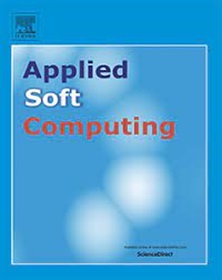基于自适应快速探索随机树算法的铁路线路变压器导向优化
IF 6.6
1区 计算机科学
Q1 COMPUTER SCIENCE, ARTIFICIAL INTELLIGENCE
引用次数: 0
摘要
铁路线路设计是铁路工程的重要组成部分。尽管计算机辅助对齐优化方法在确定对齐方面取得了广泛的成功,但有效地探索目标函数的下降方向(OFDD)仍然具有挑战性,特别是在导航复杂的对齐搜索空间时。为了解决这一问题,必须综合考虑关键因素,包括全局和局部环境,已探索和未探索的搜索空间,以及在OFDD优化过程中可能出现的既定对齐搜索策略和潜在的新策略。因此,在这项工作中制定了一个面向对齐的Transformer框架。在该框架中,将各种实际铁路案例输入到堆叠变压器框架中,以学习优化的OFDD策略。具体来说,该模型使用两个单独的堆叠Transformer编码器处理常规输入(即,全局和局部上下文、长期目标)和不规则输入(即,历史路径)。随后,通过整合Transformer框架的输出,提出了一种自适应快速探索随机树形星(Ada-RRT-star)方法,以指导RRT的搜索方向,提高求解质量。最后,将该方法应用于一个实际的铁路实例,结果表明该方法在求解质量上优于传统的3D-RRT-star算法。此外,由Ada-RRT-star生成的最佳对准也优于人工设计的对准。本文章由计算机程序翻译,如有差异,请以英文原文为准。
Transformer-guided optimization of railway alignments using an adaptive rapidly-exploring random tree algorithm
Railway alignment design is a crucial part of a railway project. Despite the widespread success of computer-aided alignment optimization methods in determining alignments, effectively exploring the objective function’s descent direction (OFDD) remains challenging, particularly when navigating complex alignment search spaces. To address this issue, it is essential to comprehensively consider key factors, including the global and local environment, explored and unexplored search spaces, as well as established alignment search strategies and potential new ones that may emerge during the OFDD optimizing process. Therefore, an alignment-oriented Transformer framework is formulated in this work. In this framework, various real-world railway cases are input into a stacked Transformer framework to learn an optimized OFDD strategy. Specifically, the model handles regular inputs (i.e., global and local contexts, long-term goals) and irregular inputs (i.e., historical paths) using two separate stacked Transformer encoders. Afterward, an adaptive rapidly-exploring random tree star (Ada-RRT-star) method is developed by integrating the Transformer framework’s output to guide RRT’s search direction as well as to enhance the solution quality. Ultimately, the proposed method is applied to a realistic railway case, where the results demonstrate its superiority over the conventional 3D-RRT-star algorithm in terms of solution quality. Besides, the best alignment generated by the Ada-RRT-star also outperforms the manually-designed alignment.
求助全文
通过发布文献求助,成功后即可免费获取论文全文。
去求助
来源期刊

Applied Soft Computing
工程技术-计算机:跨学科应用
CiteScore
15.80
自引率
6.90%
发文量
874
审稿时长
10.9 months
期刊介绍:
Applied Soft Computing is an international journal promoting an integrated view of soft computing to solve real life problems.The focus is to publish the highest quality research in application and convergence of the areas of Fuzzy Logic, Neural Networks, Evolutionary Computing, Rough Sets and other similar techniques to address real world complexities.
Applied Soft Computing is a rolling publication: articles are published as soon as the editor-in-chief has accepted them. Therefore, the web site will continuously be updated with new articles and the publication time will be short.
 求助内容:
求助内容: 应助结果提醒方式:
应助结果提醒方式:


